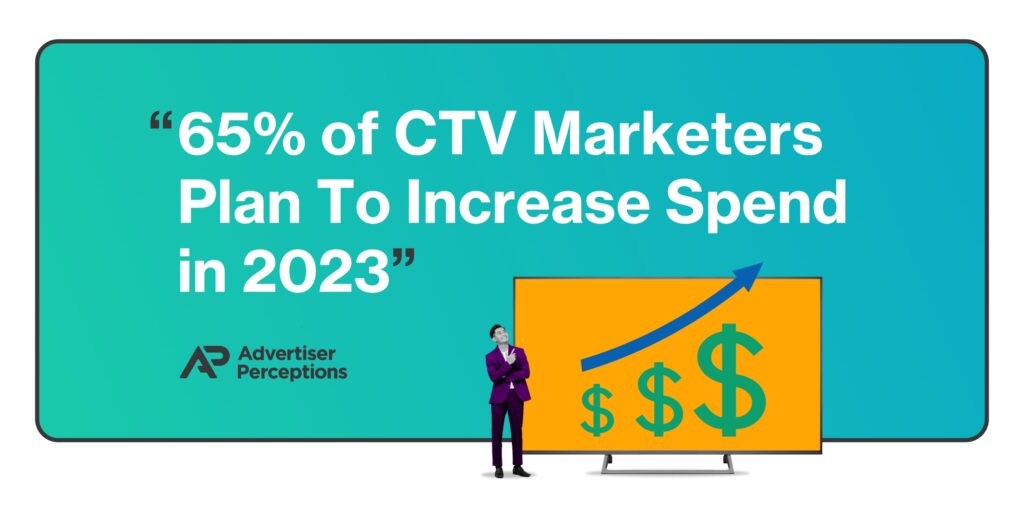Why Connected TV Advertising Is Going to Be the Next Big Thing
The advertising arena is shifting once again, and connected TV (CTV) is spearheading the change. Gone are the days when TV advertising was limited to traditional, linear formats. Today, CTV offers a more dynamic, interactive and targeted approach to reaching audiences.
But is it worth the investment?
In this post, we’ll delve into the ins and outs of connected TV advertising and why it’s becoming the go-to channel for marketers.
Why Marketers Are Flocking to CTV
According to MNTN, 65% of marketers plan to increase their spending on CTV advertising:

This is a big deal when compared to other channels like social media and paid search, where ad budgets are forecasted to decrease.
So, what’s driving this trend? For performance marketers, CTV offers better control and tracking capabilities. The rise of streaming services like Hulu, Roku, and YouTube TV has also contributed to CTV’s popularity.
One of the key drivers behind this trend is the appeal CTV holds for performance marketers. Unlike traditional TV advertising, which often feels like shooting in the dark, CTV offers a level of control and tracking that is music to a performance marketer’s ears.
With CTV ads, advertisers can target specific demographics, track user engagement, and even measure conversion rates. This granular level of detail is invaluable for optimizing campaigns and maximizing ROI.
Platforms like Hulu, Roku, and YouTube TV have changed not only the way we consume content but also how advertisers reach audiences. These platforms offer a dual advantage: a vast and engaged user base coupled with sophisticated advertising solutions.
The Shift Away from Social Media and Paid Search
While CTV is gaining traction, other advertising channels are experiencing a decline. One of the key reasons for this is the recent privacy changes, particularly on iOS devices:

These changes have made it more challenging for marketers to generate the same ROI from social media and paid search campaigns.
Moreover, Google is rolling out similar privacy features, making it even harder for advertisers to track user behavior. This has led to a decrease in social media ad spend, not because marketers are unwilling, but because they can’t achieve the same efficiency as before.
The privacy changes are not just affecting social media and paid search, they’re also impacting email marketing. Tracking clicks and opens has become more challenging, leading to artificial metrics that don’t accurately reflect campaign performance.
This has forced marketers to look for alternative channels, and CTV seems to be filling that gap quite effectively.
Duolingo’s Innovative Approach: Memes Over TV Ads
In a somewhat related development, Duolingo, the language-learning platform, has replaced its TV ads with memes. They’ve leveraged platforms like TikTok, Shorts, and Reels to drive virality through memes.

This strategy has been so successful that they’ve even established an internal “virality team” focused solely on creating viral content. While this may not directly relate to CTV, it does highlight the importance of adapting to new forms of media and audience engagement.
Last Thoughts on the Future of Connected TV Advertising
Connected TV advertising is not just a trend, it’s a significant shift in how advertisers reach and engage with their audiences. With its interactive capabilities, better tracking, and the potential for targeted advertising, CTV offers a promising future for marketers.
Key takeaways:
- Connected TV is the way of the future: With better tracking, control, and a wide range of platforms, CTV is becoming the preferred choice for advertisers.
- Privacy concerns are rocking the boat: The inability to track ROI effectively on social media and paid search is pushing marketers towards CTV.
- Adapting to what’s trending is natural and prudent: Whether it’s embracing new channels like Threads or innovative strategies like Duolingo’s memes, the key is to adapt to the changing landscape.
As traditional channels become less effective due to privacy concerns, CTV stands out as a robust and efficient alternative. So, is connected TV advertising worth it? We think the answer is hell yeah.
If you’re ready to level up your ad campaigns, Single Grain’s paid ads experts (in a variety of formats/platforms) can help!👇
For more insights and lessons about marketing, check out our Marketing School podcast on YouTube.
The post Why Connected TV Advertising Is Going to Be the Next Big Thing appeared first on Single Grain.


